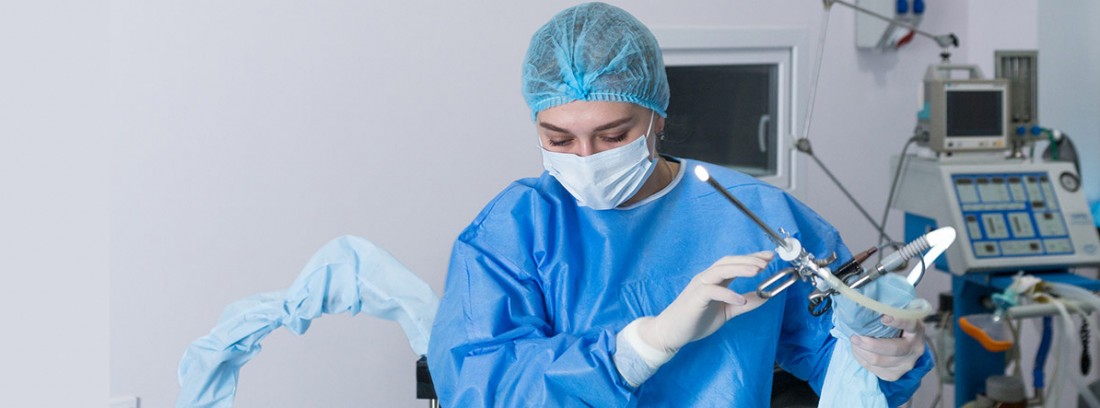What is a hysteroscopy?

Hysteroscopy is a diagnostic test consisting of in looking inside the uterus with a hysteroscope. It is a rigid rectilinear chamber about 30 cm long and a few millimeters in diameter, which is inserted through the vagina and the cervix into the uterus. The image we obtain of the uterus allows us to identify if inside there is some kind of pathology and extract a biopsy if required.
The walls of the uterine cavity remain in contact unless we artificially separate them, and that is done injecting a distension medium, which can be gaseous or liquid. By dilating the cavity with the liquid, it unfolds allowing us to see inside
The first hysteroscopies were done by injecting gas into the cavity, but vision is much better with liquid media type physiological saline.
There are 2 types of hysteroscopy.
Diagnostic hysteroscopy
It is done with low caliber hysteroscopes (between 3 and 5 mm). It can be done without anesthesia or with local anesthesia, so it can be done in a gynecological consultation.
The limitation of diagnostic hysteroscopy is that due to the low caliber of the hysteroscope, only the cavity can be observed and, in some cases, a “mini-clamp” can be inserted to perform a small biopsy.
Diagnostic hysteroscopy We can use it to evaluate the endometrial cavity of patients with menstrual alterations or fertility problems, extraction of an IUD fragment that may have remained in the cavity, evaluate the shape of this cavity and the holes of the fallopian tubes ...
Therapeutic or surgical hysteroscopy
In this case, a hysteroscope is used. 10 mm that allows the use of utensils to carry out the removal of tumors that have grown in the uterine cavity.
The downside is that it requires dilate mechanically the cervix with what is done in the operating room and with some type of anesthesiaEither sedation or epidural.
Therapeutic hysteroscopy it is useful when ultrasound has been diagnosed lumps or thickenings in the endometrial cavity, or polyps and fibroids endometrial diseases, very frequent pathologies that can be completely solved by means of this technique, which has a very low rate of complications, a very favorable postoperative period and is performed in the vast majority of cases on an outpatient basis.
Hysteroscopy detects fibroids and polyps
Endometrial polyps
They are one of the most frequent gynecological pathologies. Is about fleshy formations rounded that grow in the cavity. They are easily visible by gynecology and by hysteroscopy. In this case, the surgical hysteroscope has a electric instrument that allows us to go trimming the polyp with little passes.
Later, it is sent to the laboratory for analysis, because although they are mostly benign, there is a small percentage of.
Removal of fibroids
They are hard and benign fibrous formations that can grow in any location in the uterus. In the case of growing in the cavity of the uterus, they can be approached by hysteroscopy, and just as with polyps they can be removed in small bites.
Unlike polyps, fibroids they can be much olderThey may have a hidden part in the uterine wall that would not be safely resectable and are much more time consuming to remove overall.
At other times we may indicate a hysteroscopy to extract or "burn”The entire mucosa that lines the endometrial cavity internally. This procedure is called endomethrectomy or endometrial ablation, and is indicated in women who no longer want more children and have very abundant periods. With this, we are able to permanently reduce menstrual bleeding to a minimum.
It is very important to carry out gynecological check-ups at least once a year since the most important thing is prevention. They have an excellent medical team of gynecology specialists and the best diagnostic tests.
CALCULATE YOUR PRICE
(Updated at Apr 14 / 2024)